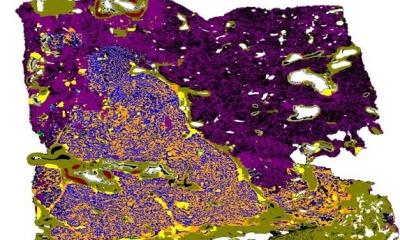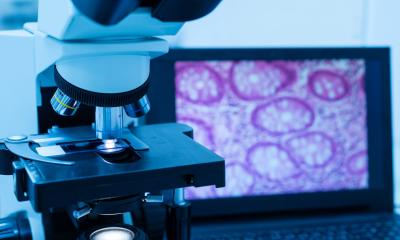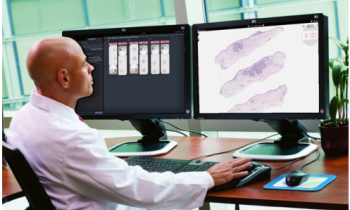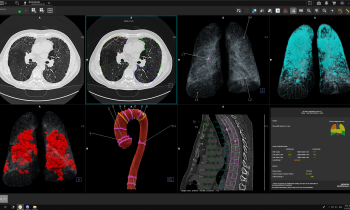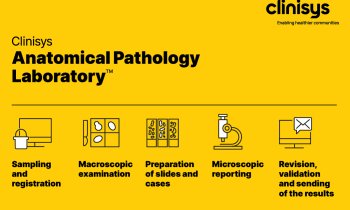
Photo: Mark Nicholls
Article • Digital pathology discussion panel
The AI tools pathologists want and need
The evolving role of AI tools in digital pathology was explored at an open discussion during the annual Digital Pathology and AI Congress in London with a high-level panel of practitioners looking at current and future technology options. The panel of pathologists, scientists and academics from Europe and the USA assessed the tools they currently use and are available to them, and those they would like to see available in the future as AI plays an increasing role in pathology.
By Mark Nicholls
The experts also looked at how the adoption of AI into clinical practice is reimbursed and whether digital pathology is delivering on its promise.
Taking part in the discussion was Professor Evita Sadimin, Chief of the Division of Pathology Informatics and Data Science at the City of Hope National Medical Center in California; Dr Anna Bodén, Chief of AI governance at the Region Ostergotland and clinical pathologist at the Department of Clinical Pathology and Department of Biomedical and Clinical Sciences at Linköping University in Sweden; Consultant Pathologist Luiza Moore, Senior Director of Clinical Diagnostics with AstraZeneca; and Professor Nina Linder, Guest Professor of Medical Diagnostic Artificial Intelligence at the Department of Women’s and Children’s Health, Uppsala University, Sweden.
Challenging beginnings
The panellists highlighted what they consider the most current promising use of AI. This included delivering diagnostics to patients in remote locations, supporting the introduction of new biomarkers and improved medical screening. However, all acknowledged the implementation of AI into practice and workflows has had challenges.
For us, the number one challenge of introducing AI algorithms into clinical practice is regulatory, which is very tricky to navigate, as well as having the constant requirement to produce return on investment
Evita Sadimin
Looking back to when her department began to introduce digital pathology, Bodén believes having more structured data from the outset would have made implementation easier. Linden added that establishing good ground rules was an ongoing problem as she believes end points are still not good enough to train algorithms.
While ‘fantastic tools’ are becoming available, Moore stated: ‘We are very conscious of how this is going to fit into individual real-world labs and with interoperability and we are looking at ways to deploy AI that minimises disruption.’ Sadimin, who offered a US perspective, said: ‘For us, the number one challenge of introducing AI algorithms into clinical practice is regulatory, which is very tricky to navigate, as well as having the constant requirement to produce return on investment.’
New approaches to reimbursement needed
In terms of improving diagnostic accuracy, Moore said greater acceptance of novel biomarkers for computational pathology will be essential but rather than simply being a multi-industry response, a ‘societal response’ is also required with wider public and governmental acceptance of AI.
All panellists agreed that demonstrating return on investment (RoI) is a major hurdle, and with relatively few laboratories that are digitised, reimbursement remains fragmented. Bodén favoured a longer-term perspective towards reimbursement and hopes to see health systems become more data driven to provide a better understanding. Sadimin said the main circumstances where it has been easier to show a RoI with AI in pathology is whenever pathologist shortages arise, or they are required to work in remote locations. As for showing benefits to an organisation, she said: ‘That is more challenging and very much depends on who you ask and people’s levels of experience and comfort with AI.’
The issue of bias and ethics in AI use in pathology was raised, with concerns over reliable ground truth but also dogged by a lack of institutions using the approach. Sadimin added: ‘We need to get as many institutes as possible using it and across sites with different demographics.’
Recommended article

Article • Point-of-care diagnostics
Improving women’s health in remote regions with digital pathology
Point-of-care diagnostics based on a combination of mobile-sized scanners and artificial intelligence (AI) are helping save the lives of women in low-resource settings. The AI technique is being applied in Kenya and Tanzania to deliver screening for cervical cancer – now the leading cause of cancer-related deaths in women in that region and a bigger cause of death than childbirth.
Slow take-up seen as a major hurdle
The future of AI tools in pathology hinges on a few key factors, the panellists concluded: A major concern remained the limited take-up of the technology. ‘With only 4-5% of hospitals in the US currently digital, without digital slides, we are not going to have AI,’ Linder pointed out the importance of wider adoption globally.
Bodén suggested a need for more AI use on assisting with reporting as well as improved search functionality to reduce the need for outside data sources. Moore said: ‘There are so many biomarkers in the pipeline, that digital pathology biomarker assessment is coming and there is going to be more than one biomarker on one slide, so multiplex too. The sooner we can embrace that the better. Tumour volume is going down because of early detection programmes, so with less tumour, we will need more biomarkers.’
Profiles:
Evita Sadimin is Chief of the Division of Pathology Informatics and Data Science at the Department of Pathology, City of Hope National Medical Center, in California and an Associate Professor of Pathology. Her clinical work focuses on urologic oncology pathology.
Anna Bodén is Chief of AI governance at the Region Ostergotland and clinical pathologist at the Department of Clinical Pathology and Department of Biomedical and Clinical Sciences at Linköping University in Sweden. She is co-lead of the European project Bigpicture on AI-driven digital pathology, has spearheaded digital pathology in her department and aims to integrate AI into clinical practice.
Luiza Moore is a practising consultant pathologist in Cambridge and Senior Director of Clinical Diagnostics, Global Oncology Diagnostics, AstraZeneca. In her current role she works with multiple franchises to coordinate delivery of diagnostic solutions and leads efforts to maximize biomarker adoption and facilitate decentralised molecular testing.
Nina Linder is a Guest Professor of Medical Diagnostic Artificial Intelligence at the Department of Women’s and Children’s Health, Uppsala University, Sweden, and a researcher at the Institute for Molecular Medicine (FIMM) at the University of Helsinki in Finland. Her research focus is on the development of novel AI-based solutions for cancer and infectious disease diagnostics.
03.04.2025




